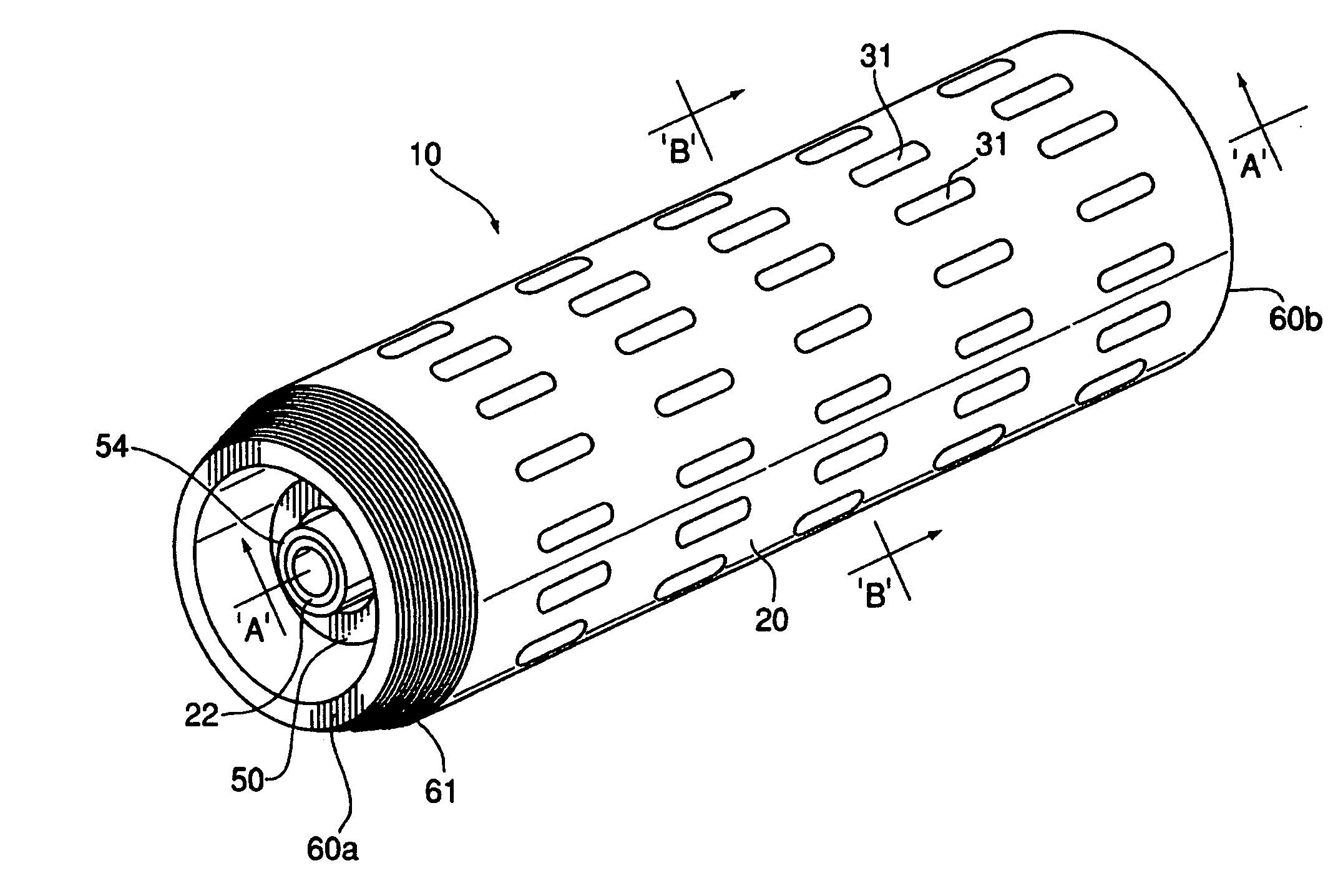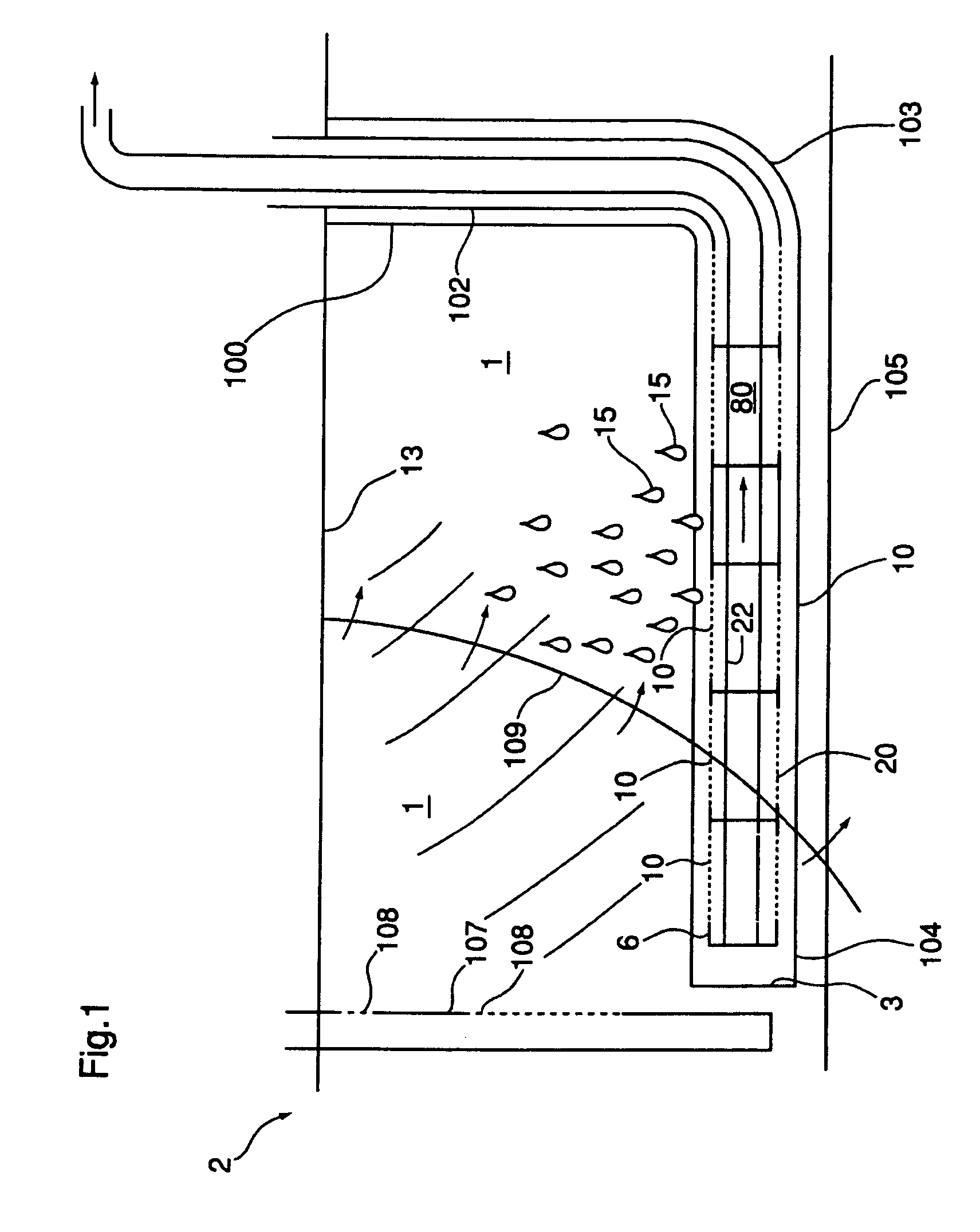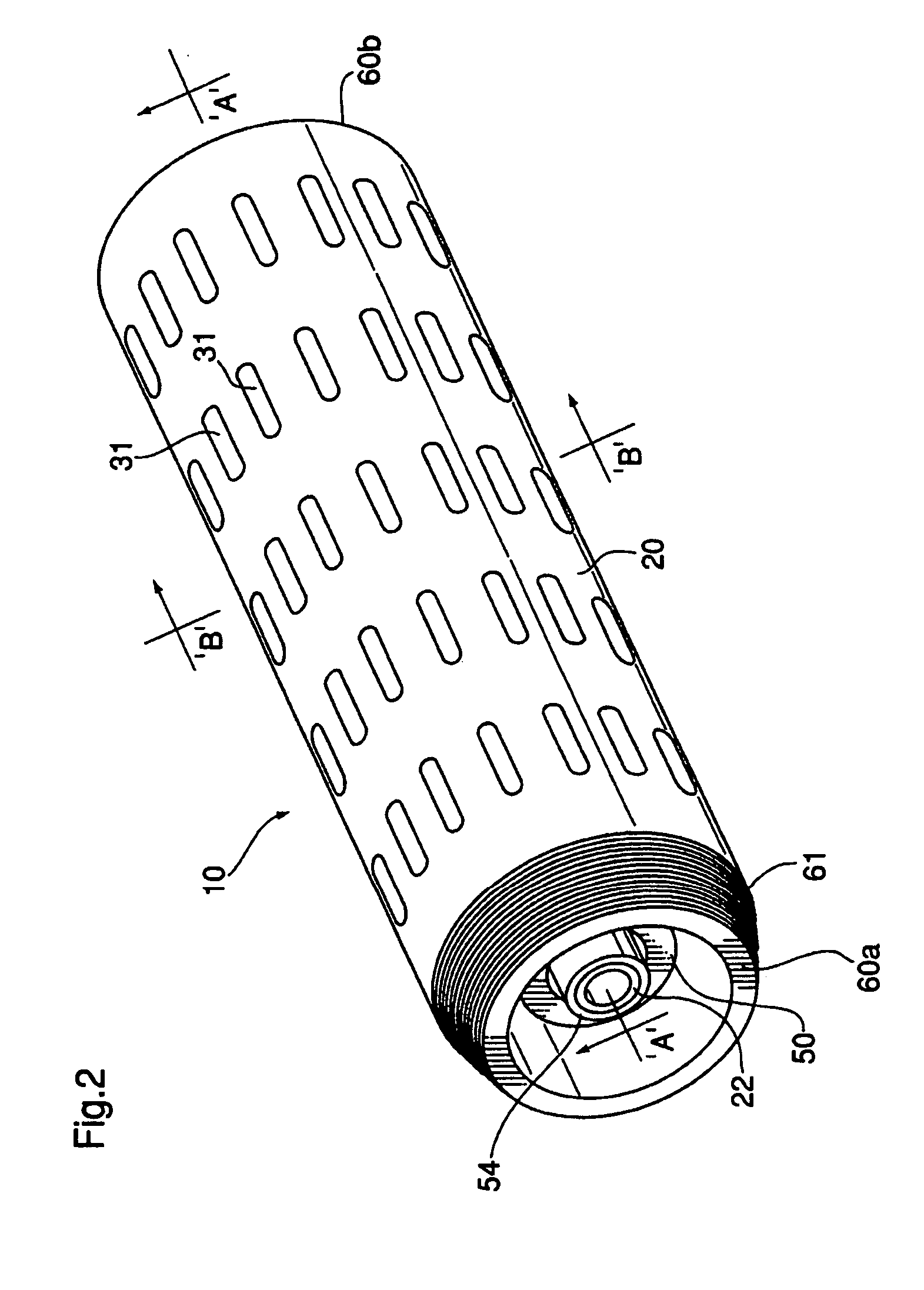Well liner segments for in situ petroleum upgrading and recovery, and method of in situ upgrading and recovery
- Summary
- Abstract
- Description
- Claims
- Application Information
AI Technical Summary
Benefits of technology
Problems solved by technology
Method used
Image
Examples
first embodiment
[0068]In a first embodiment and as shown in FIGS. 2 & 4a, apertures / slots 31 are evenly spaced about a periphery of outer member 22. Similarly, apertures / slots 41 in interior member 22 are likewise equally spaced about an entire periphery thereof. Apertures / slots 41 are typically larger in width than apertures 31, as there is no remaining need to attempt to “screen” sand from the viscous oil 15 entering interior member 22. Viscous oil 15 consequently flows directly radially inwardly through catalyst 40 in interstitial space 12 into interior area 80 in internal member 22, as seen in FIG. 4a.
[0069]Alternatively, as seen in FIG. 4b, apertures / slots 31 in outer member 20 may be situated only on an upper portion of outer member 20, and apertures / slot 41 in inner member 22 situated on a lower portion thereof. A vice versa arrangement is also contemplated. Under either of the two alternative configurations, viscous oil 15, as shown in FIG. 4b, will necessarily be required to travel a circ...
second embodiment
[0078]In a second embodiment, a first version of which is shown in FIG. 12, the sliding seal 52 comprises merely a single (outer) ring member 50 fixedly secured to said outer member 20, as shown in FIG. 12, to allow not only longitudinal expansion of said inner liner member 22 to said outer liner member 20, but also provide some clearance 55 to permit some radial growth due to thermal expansion in a radial direction. In a second version, shown in FIG. 13, the sliding seal 52 comprises merely a single (inner) ring member 54 fixedly secured to the inner liner member 22 via circumferential welds 72, to allow not only longitudinal expansion / contraction of said inner liner member 22 relative to said outer liner member 20, but also provide some radial clearance 55 to permit some radial growth. Importantly, in all configurations the sliding seal 52 not only concentrically locates inner liner member 22 within outer liner member 20, but also simultaneously allows slidable longitudinal moveme...
PUM
| Property | Measurement | Unit |
|---|---|---|
| Flow rate | aaaaa | aaaaa |
| Size | aaaaa | aaaaa |
| Thermal expansion coefficient | aaaaa | aaaaa |
Abstract
Description
Claims
Application Information
 Login to View More
Login to View More - R&D
- Intellectual Property
- Life Sciences
- Materials
- Tech Scout
- Unparalleled Data Quality
- Higher Quality Content
- 60% Fewer Hallucinations
Browse by: Latest US Patents, China's latest patents, Technical Efficacy Thesaurus, Application Domain, Technology Topic, Popular Technical Reports.
© 2025 PatSnap. All rights reserved.Legal|Privacy policy|Modern Slavery Act Transparency Statement|Sitemap|About US| Contact US: help@patsnap.com



